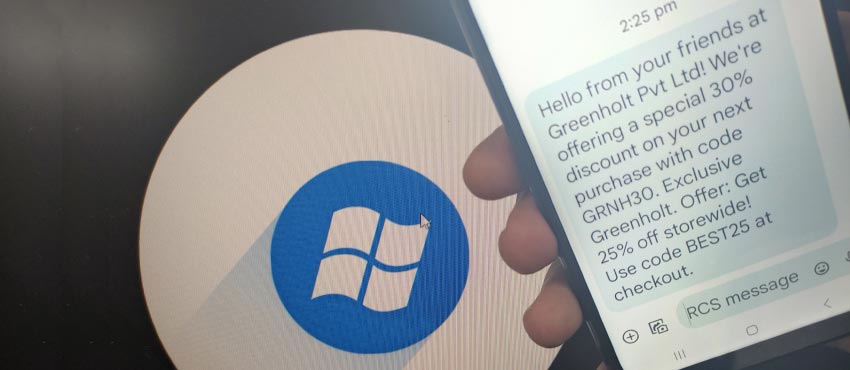Track the Delivery Status of my Bulk SMS messages with Bulk SMS Software for Windows
Tracking the delivery status of your Bulk SMS messages is an essential aspect of monitoring the success and effectiveness of your SMS campaigns. Bulk SMS Software for Windows typically provides features that allow you to track the delivery status of your messages. Here's a detailed explanation of how you can track the delivery status using such software:

-
Message Logs: Bulk SMS software usually maintains a log of all the messages sent from your account. The message log contains information about each message, including the recipient's number, message content, sending time, and delivery status. The software may provide a user-friendly interface where you can view and filter the message log based on various criteria, such as date, recipient, or status.
To track the delivery status using the message logs, follow these steps:
a Open the Bulk SMS software and navigate to the message log section.
b Locate the specific SMS campaign or batch of messages you want to track.
c Look for the delivery status column in the log. The delivery status can include different indicators such as "Delivered," "Pending," "Failed," or "Undelivered."
d Check the status of each message to see if it has been successfully delivered or not.
The message logs provide a comprehensive overview of the delivery status of your Bulk SMS messages, allowing you to monitor and evaluate the effectiveness of your campaigns.
-
Integration with Analytics Platforms: Some Bulk SMS software applications offer integration with analytics platforms or third-party services. These integrations allow you to track the delivery status of your messages in conjunction with other metrics and analytics.
To track the delivery status through analytics integration, follow these steps:
a Set up the integration: Ensure that your Bulk SMS software is integrated with the analytics platform of your choice. This integration may involve configuring API credentials or connecting the software with the analytics service.
b Access the analytics platform: Log in to the analytics platform and navigate to the section dedicated to SMS tracking or campaign monitoring.
c Monitor delivery status: Within the analytics platform, you can typically access detailed reports and visualizations that display the delivery status of your Bulk SMS messages. These reports may include metrics such as delivery rate, bounce rate, or conversion rate.
By leveraging analytics integrations, you can gain deeper insights into the performance.
-
Real-time Delivery Notifications: Some Bulk SMS software applications provide real-time delivery notifications, allowing you to receive instant updates on the delivery status of your messages. These notifications can be sent via email, SMS, or within the software itself.
To set up real-time delivery notifications, follow these steps:
a Configure notification settings: Access the settings or preferences section of your Bulk SMS software and locate the notification settings. Specify your preferred method of notification, such as email or SMS.
b Define delivery status triggers: Determine the specific delivery statuses for which you want to receive notifications, such as "Delivered," "Failed," or "Undelivered."
c Provide contact details: Enter the email address or phone number where you want to receive the delivery notifications.
d Enable notifications: Activate the notification feature to start receiving real-time updates on the delivery status of your Bulk SMS messages.
With real-time delivery notifications, you can promptly identify any issues or failures in message delivery and take immediate action to address them.
-
Delivery Reports:Another method to track the delivery status of your Bulk SMS messages is through delivery reports. Delivery reports are generated by the SMS gateway provider and provide detailed information about the status of each message sent from your Bulk SMS software.
To access delivery reports, the following steps are typically involved:
a Enable delivery reports: Ensure that your Bulk SMS software is configured to request delivery reports from the SMS gateway. This setting is usually available in the software's settings or preferences section.
b Check the delivery reports: Once the messages are sent, the Bulk SMS software periodically retrieves the delivery reports from the SMS gateway. The software may have a dedicated section where you can view these reports.
c Interpret the delivery reports: The delivery reports contain information about each message's status, including delivery success, delivery failure, or pending status. They may also include additional details such as delivery timestamps, error codes, or reasons for failed deliveries.
By analyzing the delivery reports, you can gain insights into the success rate of your Bulk SMS messages and take appropriate actions based on the information received.
In summary, tracking the delivery status of your Bulk SMS messages with Bulk SMS Software for Windows involves utilizing features such as message logs, delivery reports, real-time delivery notifications, and analytics integrations. These features enable you to monitor the success and effectiveness of your SMS campaigns, identify delivery issues, and make informed decisions to improve your messaging strategy.
Updated on: 📆 12/08/2023
